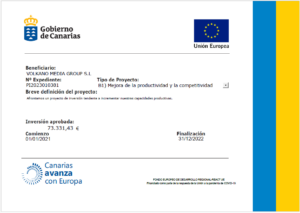Feeding dim (our dimensions) into the cv2.resize function, we’ve now obtained a new image named resized which is not distorted (Line 37). Recall back to Line 9 of this script where we extracted the width and height of the image. As you can see in Figure 3, we’ve extracted the face of Dr. Ian Malcolm.
- The command is everything after the bash prompt $ character.
- It enables the programmer to express ideas in fewer lines of code without reducing readability.
- Using the popular Canny algorithm (developed by John F. Canny in 1986), we can find the edges in the image.
- Say, for example, you’re working on recognizing faces in a movie.
Masking and bitwise operations
Following are the main library modules of the OpenCV library. It’s open source, contains over 2500 algorithms and is operated by the non-profit Open Source Vision Foundation. Already have some code that you want to see as a part of the library? In this article the main points of opencv are explored such it’s importance and How it is effecting the world constantly.
Computer Vision Vs Image Processing
By the end of today’s blog post, you’ll understand the fundamentals of OpenCV. The ml module brings machine learning to OpenCV, offering a variety of algorithms to train models for tasks like classification, regression, and clustering. OpenCV is a cross-platform library using which we can develop real-time computer vision applications.
Running the first OpenCV tutorial Python script
This module covers the video analysis concepts such as motion estimation, background subtraction, and object tracking. In the Java library of OpenCV, this module is included as a package with the name org.opencv.video. It has C++, Python, Java and MATLAB interfaces and supports Windows, Linux, Android and Mac OS. OpenCV leans mostly towards real-time vision applications and takes advantage of MMX and SSE instructions when available. A full-featured CUDAand OpenCL interfaces are being actively developed right now.
If the library finds Intel’s Integrated Performance Primitives on the system, it will use these proprietary optimized routines to accelerate itself. In July 2020, OpenCV announced and began a Kickstarter campaign for the OpenCV AI Kit, a series of hardware modules and additions to OpenCV supporting Spatial AI. The first alpha version of OpenCV was released to the public at the IEEE Conference on Computer Vision and Pattern Recognition in 2000, and five betas were released between 2001 and 2005. The world’s largest Computer Vision library meets the world’s top-rated Face Recognition technology.
In the Java library of OpenCV, this module is included as a package with the name org.opencv.calib3d. First, you might want to resize a large image to fit on your screen. Image processing is also faster on smaller images because there are fewer pixels to process. In the case of deep learning, we often resize images, ignoring aspect ratio, so that the volume fits into a network which requires that an image be square and of a certain dimension. Let’s go ahead and get started learning the basics of OpenCV and image processing.
Locating all frames containing Dr. Ian Malcolm in Jurassic Park would be a great face recognition mini-project to work on. Extracting “regions of interest” (ROIs) is an important skill for image processing. So on Line 9, I call image.shape to extract the height, width, and depth. You can start by choosing your own datasets or using our PyimageSearch’s assorted library of useful datasets. From building smart surveillance systems that detect intruders to developing assistive technologies for the visually impaired, the potential applications of OpenCV are limited only by your imagination. With its robust features, extensive documentation, and thriving community, OpenCV offers a solid foundation for anyone looking to embark on a journey into computer vision.
Let us consider a basic example to illustrate the various capabilities of OpenCV. In this article, opencv introduction we delve into OpenCV, exploring its functionalities, applications, and practical examples.
Whether you want to smooth out an image, sharpen its details, or manipulate its colors, the imgproc module has got you covered. With OpenCV’s image processing capabilities, you can enhance your images and videos to create stunning visual effects. This is an easy-to-use interface with simple UI capabilities. In the Java library of https://forexhero.info/ OpenCV, the features of this module is included in two different packages namely, org.opencv.imgcodecs and org.opencv.videoio. This module includes algorithms regarding basic multiple-view geometry algorithms, single and stereo camera calibration, object pose estimation, stereo correspondence and elements of 3D reconstruction.
In the Java library of OpenCV, this module is included as a package with the name org.opencv.core. The core module is the backbone of OpenCV, providing essential data structures and basic operations. It includes functions for handling arrays, matrices, and images and indispensable utilities for memory management and error handling. The core functionality lays the foundation for all other OpenCV modules, setting the stage for your computer vision escapades.
OpenCV is released under a BSD license and hence it’s free for both academic and commercial use. It has C++, C, Python, and Java interfaces and supports Windows, Linux, Mac OS, iOS and Android. When opencv was designed the main focus was real-time applications for computational efficiency. All things are written in optimized C/C++ to take advantage of multi-core processing. In this section we look at the basic operations for displaying images in a windowand reacting to mouse and keyboard events.
This module includes the concepts of feature detection and description. In the Java library of OpenCV, this module is included as a package with the name org.opencv.features2d. OpenCV, short for Open Source Computer Vision Library, is an open-source computer vision and machine learning software library. Originally developed by Intel, it is now maintained by a community of developers under the OpenCV Foundation. There are several color spaces that you’ll soon become familiar with as you learn about image processing. When it is integrated with various libraries, such as NumPy, python is capable of processing the opencv array structure for analysis.
Vadim Pisarevsky joined Gary Bradsky to manage Intel’s Russian software OpenCV team. In 2005, OpenCV was used on Stanley, the vehicle that won the 2005 DARPA Grand Challenge. Later, its active development continued under the support of Willow Garage with Gary Bradsky and Vadim Pisarevsky leading the project.
OpenCV now supports a multitude of algorithms related to Computer Vision and Machine Learning and is expanding day by day. Get your FREE 17 page Computer Vision, OpenCV, and Deep Learning Resource Guide PDF. Inside you’ll find our hand-picked tutorials, books, courses, and libraries to help you master CV and DL.
I actually predetermined the (x, y)-coordinates using Photoshop for this example, but if you stick with me on the blog you could detect and extract face ROI’s automatically. Therefore, the dimensions of an image represented as a NumPy array are actually represented as (height, width, depth). Sign up or Log in to your Roboflow account to access state of the art dataset libaries and revolutionize your computer vision pipeline. As we reach the end of our exploration of OpenCV, I hope you are filled with excitement and curiosity about the incredible potential of computer vision. With OpenCV at your disposal, you now have the keys to unlock a new world where machines can see and comprehend their surroundings, paving the way for a smarter, more connected future. Tutorials Point is a leading Ed Tech company striving to provide the best learning material on technical and non-technical subjects.




